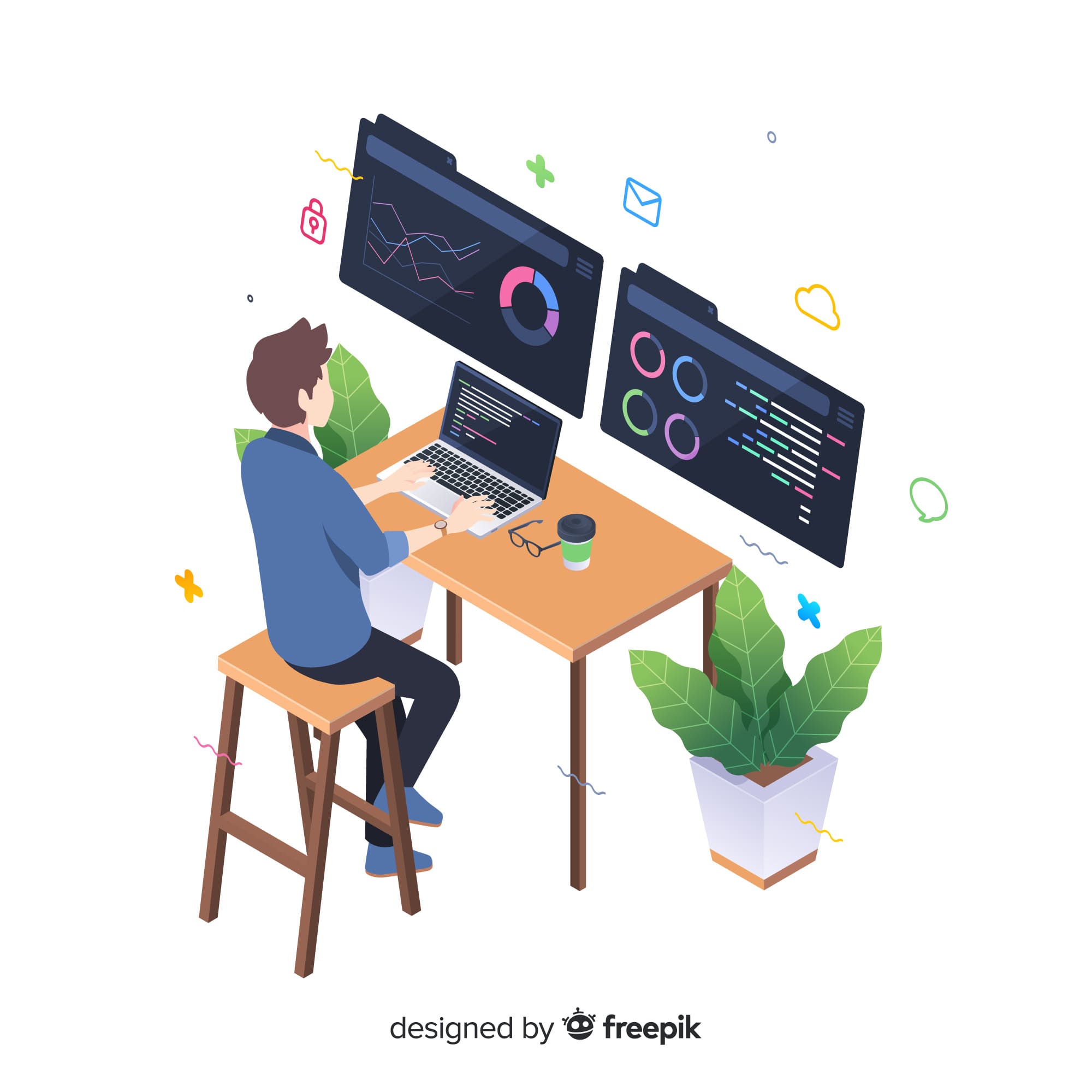
10 HTML Elements You Didn’t Know You Need
We know the classic tags that we used regularly like p for paragraph. h1-h6 for headline size, nav for navigation, article for bloger, news articles, footer,header etc..
Today we will study some new and exciting 10 HTML elements you didn't know you needed.
1] Audio
2] Picture
3] Progress
4] Time
5] Date list
6] Work Break Opportunity
7] Video
8] Template
9] Output
10] Blockquote & Cite
Let's take a look more in-depth at each of the HTML tags listed above.
1] Audio:
There are three supported file formats of Audio in web development: mp3, WAV, and OGG. And we use the Audio tag to define a sound.
2] Picture:
picture tag used for specific image sources. there are two different tags source elements and one image elemenet are used.
3] Progress:
progress meta tags display bars on a web page.
4] Time:
Time tags are used for crawlers and bots to understand what Time is referenced exactly.
5] Datalist:
A catalyst is an advanced drop-down to select something in a form. The good thing is that it works as both a search and a drop-down.
6] Word Break Opportunity:
If you want to write a long block of text or a long word, use the wbr tag to specify.
7] Video:
Suppose you want to add a video on a webpage that we use the Video tag to specify a movie clip or video stream. The supported format of the Video is MP4, WebM, and Ogs.
8] Template:
The template tag contains content that is hidden from the user.
9] Output:
The Output tag reveals the result of a calculation.
10] Blockquote & Cite:
The blockquote and cite HTML tags are include the content is from an outside source.
Resource:
https://dev.to/emmabostian/10-html-element-you-didnt-know-you-needed-3jo4
Disclaimer:
Wherever any material is quoted as sourced from the published text with publishing rights vested in an individual, it is stated that it is a pure quotation and has no intention to claim it as our own.
Image Source: www.freepik.com
70 adminJanuary 21, 2022

Latest From Android
The mobile phone industry is rapidly growing day by day around the world. In the 5G world, we see the android rise of the internet of things(IoT), and the app development industry is growing.
Statistic reports state that there are 3.2 billion smartphone users in the world today. Android has around 2.6 million apps on the play store.
Many companies are now seeking the services of mobile app developers to make their Apps. That should be user-friendly and more accessible.
So, in this article, we will look at some of the best latest android technology that helps make a better, more advanced, and demand application.
Table of Contents:
1] Kotlin:
Kotlin is a cross-platform, general-purpose programming language with type inference.
Google announced that the Kotlin programming language is now its preferred language for Android app developers.
Kotlin is said to be the advanced version of Java. We can write better and faster android apps with Kotlin.
Kotlin is used by over 60% of professional Android developers that helps boost productivity, developer satisfaction, and code safety. It's been one of the most-loved languages.
Famous mobile applications are written in Kotlin is
- Pinterest The popular photo-sharing app.
- Trello is widely popular and allows users to organize anything with anyone, anywhere.
- Netflix is the world’s leading streaming entertainment service.
- Basecamp is one of the leading project management and team communication tools.
- Zomato uses Kotlin to write more safe and concise code for its Android app.
2] Android Jetpack:
Jetpack is a suite of libraries to help developers follow best practices, reduce boilerplate code, and write code that works consistently across Android versions and devices to focus on the code they care about their program.
For faster and easier Android app development, software engineers embrace the Android Jetpack, making it one of the latest technologies for developers.
3] Flutter:
Flutter is an open-source UI software development kit, and Google developed it. It is used to create cross-platform applications for Android, iOS, Mac, Windows, Google Fuchsia, Web platform, and the web from a single codebase.
Flutter apps are written in the Dart language and use many of the language's more advanced features.
Flutter uses a variety of widgets to deliver a fully functioning application.
Famous mobile applications are written in Flutter is
- Google ads: It is a mobile application that allows you to manage Google ad campaigns directly from your smartphone.
- Postmuse – Instagram photo editing app
- Cryptograph app
4] IoT( Internet of things):
The key mobile app development trend is the implementation of the IoT (Internet of Things). In Android. Google's IoT platform helps IoT integration through Android APIs on Android Studio.
5] Apache Cordova:
Apache Cordova is a mobile application development framework created by Nitobi.
Apache Cordova enables software programmers to build hybrid web applications for mobile devices using CSS3, HTML5, and JavaScript, instead of relying on platform-specific APIs like those in Android, iOS, or Windows Phone.
Contributors to the Apache Cordova project include Adobe, BlackBerry, Google, IBM, Intel, Microsoft, Mozilla, etc.
Resource:
https://acodez.in/android-new-technology-for-developers/
https://www.westagilelabs.com/blog/top-10-android-app-development-trends/
Disclaimer:
Wherever any material is quoted as sourced from the published text with publishing rights vested in an individual, it is stated that it is a pure quotation and has no intention to claim it as our own.
Image Source: www.freepik.com
76 adminJanuary 21, 2022

Top Tools of the Trade
1] Perl:
Perl has a more malleable and straightforward language. It has a shell language, a simple database, Interfaces, surprises, and a sound expression engine. It is an essential tool for building other devices.
2] HP Jet Admin:
There is no better tool than the hp’s jet admin. Management software jet admin 7.5 is running as a secure web application accessible from any browser.
3] Symantec Ghost:
Symantec Ghost is a disk that cloning and backup tool developed by Murray Haszard for binary research. This technology was acquired in 1998 by Symantec.
Symantec Ghost is an award-winning software solution for imaging and deploying desktops, tablets, and laptops servers.
Resource:
https://www.infoworld.com/article/2665101/top-10-tools-of-the-trade.html
Disclaimer:
Wherever any material is quoted as sourced from the published text with publishing rights vested in an individual, it is stated that it is a pure quotation and has no intention to claim it as our own.
Image Source: www.freepik.com
92 adminJanuary 19, 2022

BLE, Wearables – Fitness Apps
In general, the number of compatible wearable gadgets needs to be reduced from 325 million gauges throughout 2016 to more than 830 million by 2020. Tractica estimates that revenues from wearable gadgets will increase to around $ 100 billion by 2021 and market caps to $ 17 billion.
The smartwatches-related tests will add about 81M units - talking about deals for wearable devices running 2021 in 2021. Health teams, Bluetooth headsets, and HMDs (Head Mounted Displays) remain some of the most popular outfits for 2017-18. On Bluetooth wearable gadgets, mobile applications take on an important function. For example, health apps like Google Fit mix data from different apps and gadgets. Similarly, it uses sensors in a person's cell phone to collect additional health information.
BLE is Everywhere
The most significant impact of wearable innovation on versatile application advancement is BLE going standard. When Wi-Fi occurred in each cell phone, everyone considered it the passing of Bluetooth, as we probably are aware. Notwithstanding, the conviction was brief as the Bluetooth consortium thought of a low-energy variant of Bluetooth called BLE. Before long, BLE turned into the actual norm for a typical wearable to associate with outside gadgets, for example, your cell phone.
Today, application stores are loaded with applications that associate with your #1 wellness gadgets over BLE. Since customary wearables don't give direct admittance to the equipment, a BLE versatile application remains the only alternative. Wearables produce an excessive amount of client information to store and, in this way, need the outer capacity to clear a path for new information.
Cloud Syncing is an Industry Standard
When a wearable associates with a cell phone over BLE, it pushes the information to the cell phone's inward stockpiling. Most wearables anticipate that their clients should dump information toward the finish consistently. This measure will, in general, store an excessive amount of data into the cell phone, which could be an issue eventually. Wellness versatile applications push the information to devoted distributed storage when moved to the cell phone.
Another preferred position of cloud synchronizing is this that client can get to his wellness information anyplace paying little mind to the gadget. We can impart the knowledge to his wellness mentor, dietitian, or family specialist on a public URL. The figure motor of the cloud supplier can handle the organized information into intuitive diagrams and charts for prepared reference to the client where his wellbeing bar is going.
Fitness tracker features:
- Distance tracker: Any wellness tracker will log your means and distance over an exercise. Better quality wellness groups offer distance following throughout bigger timeframes to survey your wellness movement.
- Calorie Tracker: Most wellness groups will follow the number of calories you consume to tell you the exact result of your exercises. Some wellness groups likewise have calorie admission and weight trackers. These permit you to enter your food and gauge calories consumed against calories eaten.
- Pulse screen: The pulse screen permits you to measure and control the power of your exercise.
- Rest following: Sleep following permits you to screen the length and nature of your rest. This alternative is incredible for anybody hoping to improve general wellness and actual wellbeing.
- Show size: Bigger showcases permit you to all the more effectively explore through the various elements of your wellness band. The tradeoff is mass for browsability.
- Remote innovation: This component permits you to rapidly and effectively associate your wellness band with your other small gadgets.
- Water and sweat opposition: Water and sweat obstruction is significant for drawing out the life of your exercise tracker.
- Water sealing: Water obstruction won't be enough for swimming laps in the pool. Waterproof wellness groups are ideal for swimmers or anybody searching for an additional exercise choice.
- Flexible band: Bands frequently have supports or another system for changing serenely to your wrist.
Components to consider:
- Similarity: Fitness groups may offer tracker programming or parallel with your PC or cell phone to allow you to view and keep tabs on your development.
Search for brands that are worked to associate consistently with your gadgets. Some wellness trackers have related applications to control your exercise through your cell phone. - Battery life: Some wellness groups are more energy-effective than others and can be utilized more without energizing or supplanting the batteries.
Discover a harmony between convenience and battery existence with brand-explicit battery life appraisals and client audits. - Size: A well-fitting band is fundamental for running and other wearing exercises. Discover a band that changes and isn't too inconvenient on your wrist.
The Significance of Mobile Apps
Wearables will, in general, work as one with portable applications. On account of Google Fit, the gadgets gather clients' wellness information. The application stores the data, pushes it to distributed storage over IP, measures the data in an even structure, and presents it to clients in perfect reference diagrams and pie graphs. For instance, how much calories you consumed against burned-through a month ago isn't something your Fitbit shows, inferable from its restricted preparing power, screen size, or extra room of the wellness gadget.
Indeed, even in current days wearables, for example, Apple Watch and Android Wear gadgets, running an advanced working framework with twelve local applications introduced, web network, and fair battery depend on versatile applications for some basic tasks. Versatile application advancement around wearable gadgets significantly affects how they communicate with their human proprietors.
In any case, smartwatches running Android Wear and Watch OS costing several dollars speak to just a tiny amount of the wearables market. Modest Bluetooth wellness groups rule the market, and most of them don't have the advantage of LTE or Wi-Fi to associate over the web.
Conclusion-:
An easy-to-understand and dependable wellness band make your exercise an easy decision. Track your wellness objectives with the press of a catch, so you can clear your head and spotlight on getting more beneficial and more grounded.
Resource -:
https://www.msystechnologies.com/blog/how-to-design-an-android-wearable-using-smart-bluetooth/
https://www.bluepixeltech.com/service/fitness-wearable-app-development
https://www.blemobileapps.com/services/wearables-app-development/
https://www.blemobileapps.com/blog/wearable-technology-disrupting-mobile-app-development/
https://www.yellowpages.ca/tips/how-to-buy-a-fitness-tracker/
https://www.reliancedigital.in/solutionbox/fitness-bands-all-about-their-tracking-features/
Disclaimer:
Wherever any material is quoted as sourced from the published text with publishing rights vested in an individual, it is stated that it is a pure quotation and has no intention to claim it as our own.
Image Source: www.freepik.com
88 adminJanuary 17, 2022
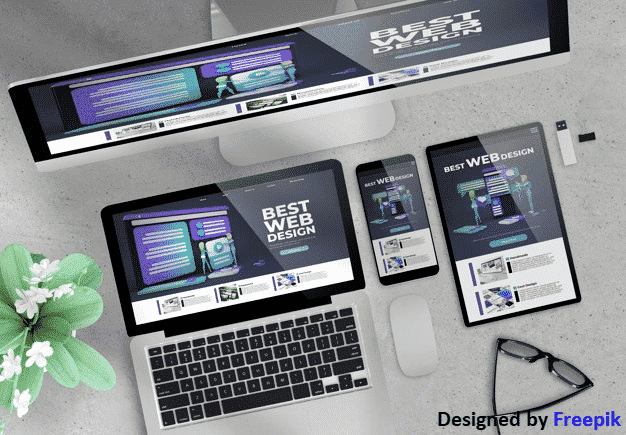
PWAs – Do you need one?
Progressive Web App is a type of web application that can be used as a web page and an application with various functions on a specific random gadget. PWAs are designed to satisfy most of the needs recorded on the Google agenda, after which the Progressive Web Application is faster, stronger, and more accessible.
The general concept of Progressive Web Apps is very easy to demonstrate. It is applications written in web development (JavaScript, CSS, HTML) that look and act like standard pages. They are visible in the Search Engine results page and are interconnected but offer comparable functionality to dynamic local applications: they are cut off, can send pop-up messages, and use gadgets on the same route as local applications.
The overall thought is that a Progressive Web App meets the desires for versatile clients who request the application be anything but difficult to utilize regardless of what the outside conditions
What makes an application a PWA?
An application could be viewed as a PWA when it meets certain necessities, or actualizes a bunch of given highlights: works disconnected, is installable, is anything but difficult to synchronize, can send message pop-ups, and so on
Furthermore, there are apparatuses to gauge how to finish (as a rate) a web application is, for example, Lighthouse. By actualizing different innovative points of interest, we can make an application more Progressive, along these lines winding up with a higher Lighthouse score. Yet, this is just a hash pointer.
There are some key standards a web application should attempt to see to be recognized as a PWA. It ought to be:
- Discoverable, so the substance can be found through web indexes.
- Installable, so it tends to be accessible on the gadget's home screen or application launcher.
- Linkable, so you can share it by essentially sending a URL.
- Organization autonomous, so it works disconnected or with a helpless organization association.
- Progressive, so it's as yet usable on an essential level on more established programs, yet completely useful on the most recent ones.
- Re-engageable, so it’s ready to send notices at whatever point there's a new substance accessible.
- Responsive, so it's usable on any gadget with a screen and a program—cell phones, tablets, PCs, TVs, coolers, and so forth
- Safe, so the associations between the client, the application, and your worker are made sure about against any outsiders attempting to gain admittance to touchy information.
Offering these highlights and utilizing all the points of interest offered by web applications can make a convincing, profoundly adaptable contribution for your clients and clients.
Attributes of Progressive Web Apps

PWAs locks in
A PWA approaches the gadget's highlights, which makes it ready to improve the client encounter and evade issues with re-commitment. Additionally, PWAs are helpfully available legitimately from a program and simple to stick to the client's home screen. Brands can send their buyers to push notices with extraordinary and constant offers, updates, and tokens of truck abandonment's, which expands clients' dependability.
PWAs are quick
Webpage speed is vital for each online business, regardless of on the off chance that it is a store or a news website. On the web - essentially portable - buyers are fretful. A big part of portable visits is deserted if the stacking of the page takes over three seconds.
Change rates are straightforwardly identified with page load time, which powers brands to enhance their sites for speed and effectiveness. PWAs ensure both. When stacked, they respond to clients' conduct easily, without the should be reloaded
PWAs are dependable
The unwavering quality of Progressive Web Apps depends on their autonomy from a web association. A PWA can work disconnected, giving a steady encounter regardless of the nature of the association. It permits clients to remain drew in as long as they need; they can keep perusing an item list or even add things to a truck, without a web association
Key focal points of Progressive Web Apps
Discoverability

The inevitable point is that web applications should be better displayed in web indexes, easier to find, rank and rate, and have metadata used by different empowerment programs.
The power component has recently been enabled in some online categories through restricted developments such as Open Graph, which allows the organization to access comparable metadata in the HTML block using labels.
The most important web level here is the Web app's display, which highlights the app's highlights, for example, name, logo, screen spray, and title tones in a JSON-edited document. This is used for settings, for example, app deployment and home gadgets screens.
Installability

The essence of the web app experience is that clients have app features on the home screen, and have the option to touch open apps to their site owner that feels well integrated with the basic category.
Current web applications can have this local app by hearing about objects set up within the Web app and in part accessible to current mobile applications called web app launches.
Security

The web platform provides a secure transfer tool that prevents simultaneous navigation and ensures that the object has not been changed, as long as you use HTTPS and build your applications securely And it's easy for customers to make sure you launch a rights application because its URL will adjust the space of your site. This is in stark contrast to the applications in the app stores, which may have a variety of comparatively designed apps, some of which can also be set up on your site, which in turn only adds to the inconvenience. Web applications eliminate that distraction and ensure that clients get the best experience possible.
Responsiveness

Responsive web applications use improvements such as media queries and viewport to ensure that their UI will match any aspect of the frame: work environment, various objects, tablet, or anything that comes quickly.
Linkability

Another great feature on the web is the ability to link an application to a specific URL without the need for an app store or a complex setup. This is the way it has always been.
The System Suggests
The key adjustment required for PWAs is technical support. Fortunately, management personnel are currently retained in all important systems in the workplace and portable.
Unique features, for example, Web App Displays, Push Notifications, and Home Screen Performance are widely assisted. Currently, Safari has limited Web App App and Add to Home Screen and no web pop-up messaging support. In addition, some important programs support all of these highlights.
All in all you have to stick to the rule of thumb change: use new methods that improve the look and feel of your app when they are available, but at the same time provide valuable support for your app when those highlights are not accessible. Giving a faithful site a good presentation is the result of applying these improvements; this means that web applications are built that follow best practices. This way everyone will have the option to use the app, however, those with current plans will benefit from PWA including much more.
Finish
Progressive web applications are at the forefront of the process of improving the system. Mobile applications and both sites contribute primarily to improving client experience. PWA applications are a step forward in this regard. They combine the best of practical and outstanding site performance. Understand that each business has its own system. In any case, downloading and presenting applications for each item, management or platform is not a formal process. PWAs are a new phenomenon in this context. In addition to the innovations, the web applications that offer change offer site benefits by using the look and feel of the app. Therefore, it is often expected that they are the future in the application development environment.
Resource –:
https://www.unifiedinfotech.net/blog/progressive-web-apps-the-future-of-app-development/
https://developer.mozilla.org/en-US/docs/Web/Progressive_web_apps/Introduction
https://www.tothenew.com/blog/an-overview-of-pwa/#:~:text=What%20is%20PWA%3F,do%20while%20using%20native%20apps
https://www.altexsoft.com/blog/engineering/progressive-web-apps/
https://ionicframework.com/pwa
https://divante.com/pwabook/chapter/01-introduction-to-pwa-technology.html#characteristics-of-progressive-web-apps
https://www.freecodecamp.org/news/practical-tips-on-progressive-web-app-development/
Disclaimer:
Wherever any material is quoted as sourced from the published text with publishing rights vested in an individual, it is stated that it is a pure quotation and has no intention to claim it as our own.
Image Source: www.freepik.com
99 adminJanuary 14, 2022 Youtube Video

Top 3 Security Plugins for WordPress
1] Wordfence 2] iThemes 3] Jetpack
These plugins were the best site security plugins in 2021.
1] Wordfence:
The Wordfence is the most popular WordPress security plugin with 4+ million active installations. Wordfence includes an endpoint firewall and malware scanner built from the ground up to protect WordPress. It covers all the significant security checks scanner, login security, Wordfence central, and security tools.
Plugin Information
- Active installations: 4+ Million
- Last update: 3 weak ago
- Requires WordPress version: 3.9 or higher
- Requires PHP version: 5.3 or higher
2] iThemes:
iThemes is an all-in-one security plugin that claims to offer more than 30 ways to protect your site from attacks. This plugin gives security site templates, a real-time website security dashboard, WordPress login security, block bad bots, ban user agents with lockouts, monitor your site's security health, etc.
Plugin Information
- Active installations: 1+ Million
- Last update: 4 months ago
- Requires WordPress version: 5.7 or higher
- Requires PHP version: 7.0 or higher
3] Jetpack:
WordPress experts make Jetpack to make WP sites safe and faster. Jetpack offers you 24/7 auto site security, speed, performance, essay design, and expert support.
Plugin Information
- Active installations: 5+ Million
- Last update: 7 days ago
- Requires WordPress version: 5.7 or higher
- Requires PHP version: 5.6 or higher
Resource:
https://www.wisevu.com/blog/top-3-wordpress-security-plugins/
https://wpmailsmtp.com/wordpress-security-plugins/
Disclaimer:
Wherever any material is quoted as sourced from the published text with publishing rights vested in an individual, it is stated that it is a pure quotation and has no intention to claim it as our own.
Image Source: www.freepik.com
80 adminJanuary 13, 2022 Youtube Video

Mobile App Security
Why we require mobile Security:- No matter what your age is, today, everyone has a smartphone. Mobile has become a part of our daily lives. We can't even imagine how much our phone holds value when it stores information. Your phone has almost all your data.
Phones are nothing but portable devices which can hold as much information they can. We can count so many reasons we need to protect our devices, which is very important.
Such cases lead to increased cyber-attacks, which can use mobile malware to target both the device and the back-end systems they access. It is a high-level time for the organization to implement mobile device security to avoid malicious malware, data leakage, and other mobile security damage if they do not.
Not only the mobile Security affects your day-to-day life, but it can also create a blunder in your business and the productivity for the same. With mobile in hand can bring countless doors to grow your business. But it is also essential to keep your phone secure. You don't want somebody to steal your personal information/data or your business planning. Hackers can do serious problems.
As the number of devices and they are used has multiple. Protecting mobile devices has become increasingly crucial. It is especially problematic when employee-owned devices connect to the corporate network.
Benefits of Mobile Security?
- The most significant need for mobile Security is to prevent sensitive data or data leakage or theft.
- Another advantage is to avoid the enterprise's ransomware attacks that target mobile devices.
- Mobile Security helps to secure and assist regulatory compliance at a higher level.
- Securing your device also helps to keep your peace of mind. Whether it is an individual or an organization, if you know your device is secure from any threats or harms or attacks, you gain a lot of peace which Is very helpful to balance your life.
Top Threats to Mobile Security:-
As we know, our mobile devices suffer from many cyber threats. Some of them are listed below:-
- Malicious Apps and Websites: In mobile devices can have mobile malware installed and access malicious online content.
- Mobile Ransomware: Mobile ransomware is a malicious app that is becoming more similar and impactful, and more valuable as sensitive data is stored on mobile devices.
- Phishing: Mobile devices have access to several different communications media – email, SMS, social media, etc. – making them an ideal platform for performing phishing attacks that steal data or carry malicious content.
- Man-in-the-Middle Attacks: Mobile communications do not always use secure technologies, making them vulnerable to an interception for eavesdropping or data modification.
- Advanced Jail-breaking and Rooting Techniques: Jail-breaking and rooting provide elevated permissions on a mobile device, enabling an attacker to take a more fantastic range of malicious actions.
- OS Exploits: Like any other software, mobile operating systems can contain exploitable vulnerabilities that place them and their users at risk.
Security vendors and products for the Mobile device:-
Below is the list of several vendors that offers complete mobile security tools and device management:-
- Scalefusion
- Hexnode Unified Endpoint Management
- Microsoft Enterprise Mobility + Security
- VMware Workspace ONE Unified Endpoint Management
- Google Endpoint Management
- N-able Remote Monitoring and Management
Resource:-
https://whatis.techtarget.com/definition/mobile-security
https://www.checkpoint.com/cyber-hub/threat-prevention/what-is-mobile-security/
Disclaimer:
Wherever any material is quoted as sourced from the published text with publishing rights vested in an individual, it is stated that it is a pure quotation and has no intention to claim it as our own.
Image Source: www.freepik.com
86 adminJanuary 12, 2022

AI – Applications of AI
Administrative Tasks Automated to Aid Educators:- Non-educational tasks such as task-related duties such as facilitating and automating personalized messages to students, back-office tasks such as grading paperwork, arranging and encouraging parent and guardian interactions, regular issue feedback facilitating, managing enrollment, courses, and HR-related topics can all be assisted by artificial intelligence.
Voice Assistants:- A student can use Voice Assistants to acquire supplementary learning material or support without the involvement of a lecturer or teacher. This reduces the cost of producing temporary handbooks while also making it simple to get answers to frequently asked topics.
Spam Filters:- The email we use every day features artificial intelligence (AI) that filters out spam emails and sends them to spam or trash folders, allowing us to see only the filtered content. Gmail, a popular email service, has achieved a filtration capacity of around 99.9%.
Facial Recognition:- Face recognition algorithms are used by our favorite devices, such as phones, laptops, and PCs, to detect and identify users to enable safe access. Apart from personal use, facial Recognition is a commonly utilized Artificial Intelligence application across various businesses, including in high-security settings.
AI Applications in Gaming:- The gaming industry is another area where Artificial Intelligence applications have gained traction. AI can be employed to generate intelligent, human-like NPCs to interact with the players. It can also predict human behavior, which can help with game design and testing. AI stalks the player throughout the Alien Isolation games, launched in 2014. The game employs two Artificial Intelligence systems: the 'Director AI,' which is constantly aware of your whereabouts, and the 'Alien AI,' which is guided by sensors and behaviors and is always on the lookout for the player.
AI Applications in Automobiles:- Self-driving automobiles are built using artificial intelligence. AI can be combined with the camera, radar, cloud services, GPS, and control signals to drive the vehicle. AI can enhance the in-vehicle experience by adding features like emergency braking, blind-spot monitoring, and steering aid.
AI Applications in Agriculture:- To detect flaws and nutrient deficits in the soil, Artificial Intelligence is applied. AI can analyze growing weeds by utilizing computer vision, robotics, and machine learning techniques. Artificial intelligence bots can assist in the harvesting of crops at a more significant volume and faster rate than human labor.
AI Applications in Social Media:- In social media, AI technology offers a variety of applications, including customer experience management, sales, and marketing management, performance monitoring, and workforce management, all of which give businesses a competitive advantage.
AI Applications in Marketing:- This use of behavioral analysis, pattern recognition, and other AI tools, users can deliver highly targeted and personalized ads. It also aids in retargeting viewers at the appropriate time, ensuring more remarkable outcomes, and reducing emotions of distrust and frustration.
Disclaimer:
Wherever any material is quoted as sourced from the published text with publishing rights vested in an individual, it is stated that it is a pure quotation and has no intention to claim it as our own.
Image Source: www.freepik.com
103 adminJanuary 11, 2022

Data Science
Data science collects all the available data and extracts valuable data from it, implementing that data to grow business.
Big data is becoming a booming tool for businesses of all sizes. Data scientists (data scientist who creates programming code and combine it with statistical knowledge to develop insights from data.) are responsible for breaking down big data into usable information and creating software that helps organizations and companies determine optimal operations.
It uses techniques and theories drawn from many fields within mathematics, computer science, information science, statistics, and domain knowledge.
Techniques used in data science:
There is various type of technologies used in data science.
- Linear regression
- Logistic regression
- Machine learning
- Naive Bayes classifiers
- Dimensionality reduction
- Cluster analysis
- Support-vector machine
- Decision trees
Data Science Uses
Data science helps us achieve some important goals for businesses and companies.
Examples:
Healthcare:
The healthcare industry used data science for EMRs to clinical databases to personal fitness trackers, practiced preventive medicine, diagnosed diseases faster, and explored new treatment options.
Entertainment:
The entertainment industry is like Netflix, Hotstar, and much more. Use data science for audience engagement.
Finance:
Data science and Machine learning have saved the financial industry unquantifiable amounts of time and millions of dollars.
Cybersecurity:
Data science is used in many industries sectors, but the most critical use of data science is in cybersecurity—data science and machine learning to detect over 360,000 new malware samples daily.
Resource:
https://builtin.com/data-science
Disclaimer:
Wherever any material is quoted as sourced from the published text with publishing rights vested in an individual, it is stated that it is a pure quotation and has no intention to claim it as our own.
Image Source: www.freepik.com
84 adminJanuary 10, 2022

10 Bootstrap Classes
Bootstrap is a free, open-source CSS framework directly responsive for mobile-first front-end web development. It contains CSS and JavaScript-based design templates for typography, forms, buttons, navigation, and other interface components.
Bootstrap is an HTML, CSS, and JS Library that focuses on simplifying the development of informative web pages as opposed to web apps, and the primary purpose of adding on a web project is to apply Bootstrap's give options like color, size, font, and layout in the project work. And the primary factor is whether the developers in charge find those options to their liking. Once added to a project, Bootstrap provides basic style definitions for all HTML elements, and the result is a uniform appearance for prose, tables, and form elements across web browsers.
List of Bootstrap Classes
| Class | Description | 1. Categories |
| .active | To adds a grey background color to the table row means (<tr> or table cell (<td>) (same color used on hover) | Tables |
| .active | To adds a gray background color to the active link in a default navbar, which means adding a black background and a white color to the current link inside an inverted navbar form. | Navbar |
| .active | To adds a blue background color to the active list item in a list group | List Groups |
| .active | And adds a blue background color to simulate a "pressed" button | Buttons |
| .active | Animates a striped progress bar | Progress Bars |
| .active | To adds a blue background color to the active dropdown item in a dropdown | Dropdowns |
| .active | Add a blue background color to the active pagination link (to highlight the current page) | Pagination |
| .affix | And the Affix plugin allows an element to become affixed (locked/sticky) to an area on the page. It toggles position: fixed on and off | Affix |
| .alert | Creates an alert message box | Alerts |
| .alert-danger | Red alert box. Indicates a dangerous or potentially harmful action | Alerts |
Disclaimer:
Wherever any material is quoted as sourced from the published text with publishing rights vested in an individual, it is stated that it is a pure quotation and has no intention to claim it as our own.
Image Source: www.freepik.com
65 adminJanuary 10, 2022
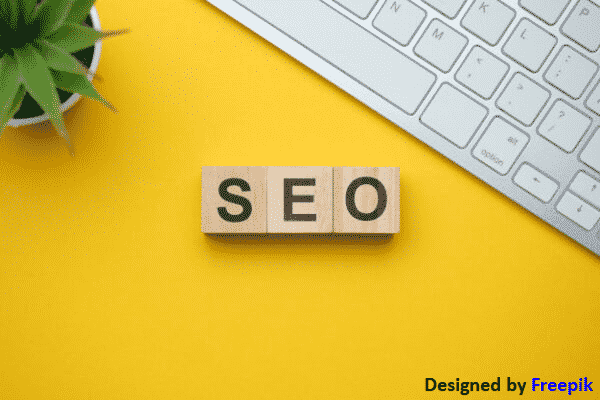
Basic Yoast SEO
This plugin has five million+ active installations and has been downloaded more than 350 million times.
Last Updated: 7 days ago
Requires WordPress Version: 5.6 or higher
Requires PHP Version: 5.6.20 or higher
How to use Yoast SEO on WordPress?
Yoast SEO help in taking care of your WordPress SEO, taking the website ahead of the competition, write the best content with Yoast SEO.
The first thing you Log in to your WordPress website. Then install the Yoast SEO plugin, activate it.
You can do readability analysis to help you write easy-to-read and understand the content.
The SEO analysis:
If you want to create a search engine-friendly page, that's why the SEO analysis tool is there for you. The SEO analysis focuses on the page's title, headline, URL, meta description, and image alt tags.
A Google preview: shows you how your website page looks in search engine result pages and mobile phones.
If you analyze all the topics, you publish or schedule your content with Yoast SEO.
Resource:
https://yoast.com/beginners-guide-yoast-seo/
Disclaimer:
Wherever any material is quoted as sourced from the published text with publishing rights vested in an individual, it is stated that it is a pure quotation and no intention to claim it as our own.
Image Source: www.freepik.com
104 adminDecember 27, 2021 Youtube Video
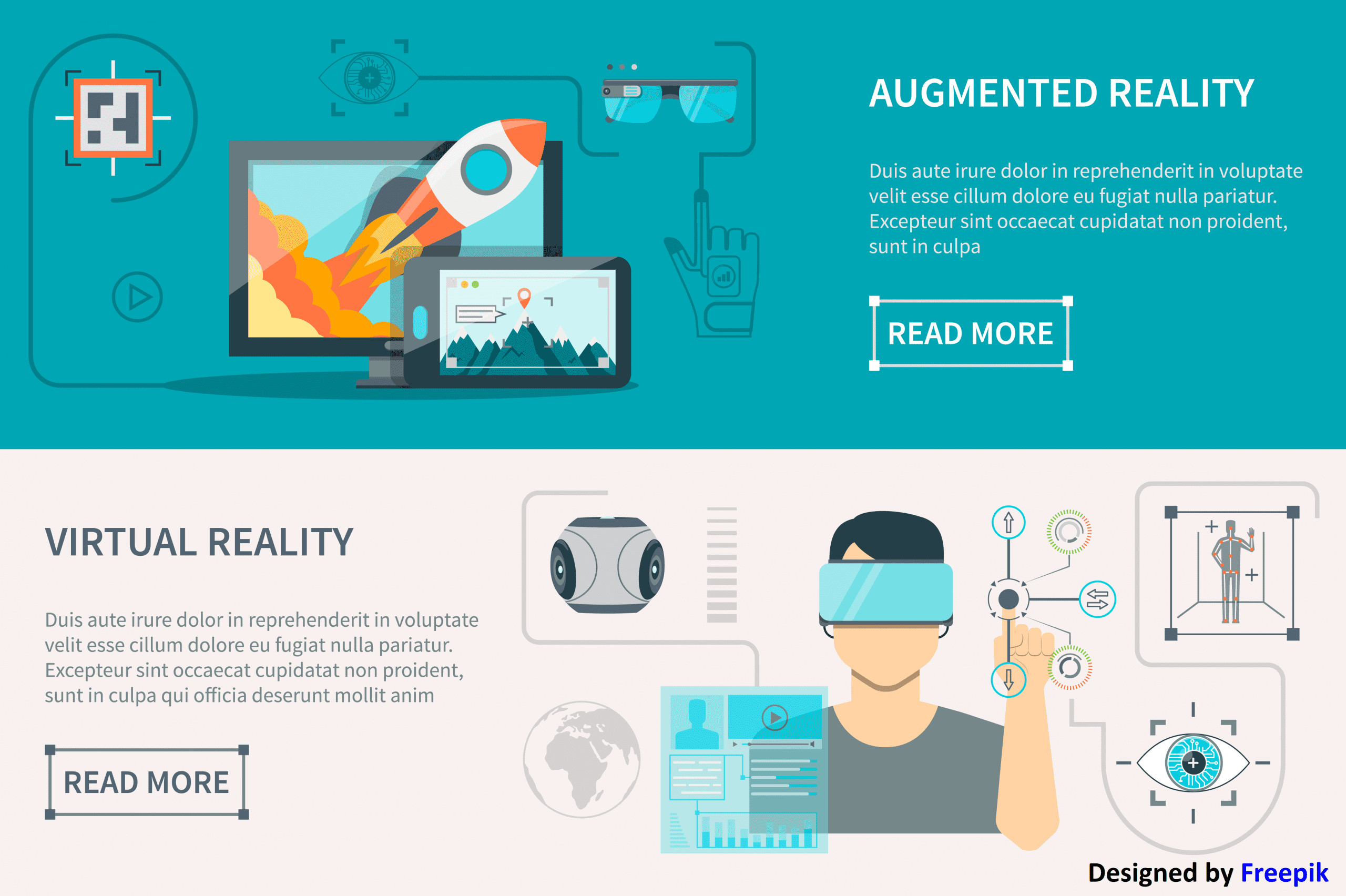
Augmented Reality (A.R.) Vs. Virtual Reality(V.R.)
Augmented reality and virtual reality technology generate interest in their possibilities for marketing, gaming, entertainment, e-commerce business, and brand development. It sounds similar, but they are two very different concepts.
What is Virtual Reality (V.R.):
Virtual reality is a computer-generated technology to take you in the alternate world or reality. This technology is used in 3D movies and video games. It is also used in training, education, and science. V.R. headsets consist of a head-mounted display with a small screen in front of the eyes and a specially designed room with multiple large screens.
What is Augmented Reality (A.R.):
A.R. can be defined as a system that incorporates three basic features a combination of natural and virtual worlds, real-time interaction, and accurate 3D registration of virtual and natural objects. Augmented reality means putting a digital product in the environment.
Augmented reality technology is designed for unrestricted movement. This technology projects 3D aspect over whatever you were looking at. This concept extends to smartphones with apps and games like Snapchat and pokemon go game, hololens holograms, etc.
Difference between A.R. and V.R.:
A.R. and V.R. are two different things, and each has its weaknesses and strengths. The difference between A.R. and V.R. is that AR uses 25% virtual and 75% natural while V.R. is 75% virtual and 25% real. A.R. does not need a headset, but some V.R. headset device is required. These are some differences between A.R. and V.R.
Resource:
https://in.pcmag.com/vr/109911/augmented-reality-ar-vs-virtual-reality-vr-whats-the-difference
Disclaimer:
Wherever any material is quoted as sourced from the published text with publishing rights vested in an individual, it is stated that it is a pure quotation and no intention to claim it as our own.
Image Source: www.freepik.com
129 adminDecember 27, 2021
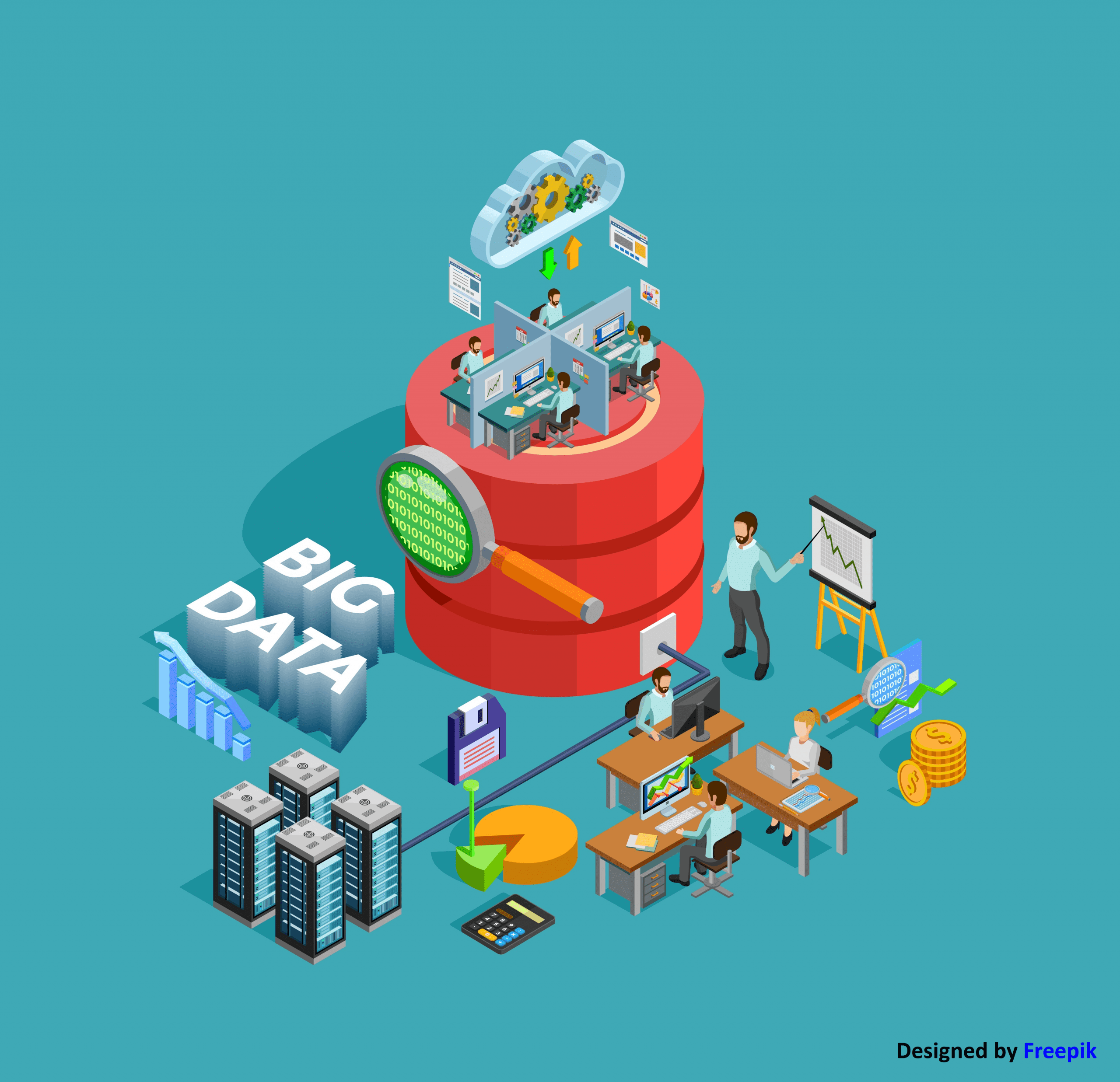
What is Big Data?
What is E-Commerce?
Electronic commerce (eCommerce) is a business strategy that allows consumers and businesses to buy and sell goods and services over the internet. An E-commerce platform can be done on computers, tablets, smartphones, and other intelligent devices. It operates in four key market categories.
Some ways of using Big Data in E-Commerce.
• It can predict trends. Every online merchant wants to be the first to know about the following best-selling product, and there are few better ways than analyzing big data to forecast trends. Online merchants can eliminate the guesswork when guessing what's making a stir online by adopting trend forecasting software.
• It can optimize the pricing. Many organizations rely on comparative pricing with competitors and benchmarking the value of their product or service to develop the optimal price strategy before the explosion of big data and novel pricing systems.
The problem with the manual method is that it gets unmanageable for larger eCommerce enterprises with thousands of items in store. The perfect scenario would be for each product's strategy, and big data makes this possible.
• Helps in ForeCast demand Almost every company does some demand forecasting. For example, if you're a restaurant owner, you'll need to anticipate how many clients you'll have tomorrow and what meals they'll order, so you know what ingredients to buy and how many cooks to hire.
• Helps to create personalized stores. Personalization has been proven to enhance conversions, and few would dispute the evidence. For years, Amazon's customer-centricity has blown the e-Commerce industry away, and many businesses are now turning to big data to mimic such personalized experiences.
• Helps to generate more sales Any e-Commerce business can benefit from big data in terms of increasing sales. With billions of dollars lost due to cart abandonment, Big Data analytics may be used to provide a consumer experience that can't be overlooked.
• Helps to optimize customer service Excellent customer service is critical for client satisfaction and retention in the retail industry. Implementing a well-defined customer care plan must be an afterthought any longer. Businesses can use Big Data technology to improve their customer service and provide a better client experience.
Benefits of using big data in e-commerce.
• You can make better strategic decisions using big data. Big Data insights help business owners make better strategic decisions by understanding what motivates customers and what they want to see in their buy items. You may then tailor your business to the demands and needs of your customers.
• Big data helps to reduce costs. It can help establish more efficient and cost-effective selling methods by using big data to understand your clients better.
• Big Data helps to improve customer service. It can be more effective in keeping your consumers pleased and building more personal and lasting connections with Big Data insights. Big data, in essence, equals improved customer retention rates.
Resource:
https://learn.g2.com/big-data-ecommerce
https://dg1.com/blog/how-big-data-benefits-e-commerce
https://www.linnworks.com/blog/ways-to-use-big-data-in-ecommerce-infographic
Disclaimer: Wherever any material is quoted as sourced from the published text with publishing rights vested in an individual, it is stated that it is a pure quotation and no intention to claim it as our own.
Image Source: www.freepik.com
69 adminDecember 27, 2021

Top 5 Questions to Ask When Choosing a Programming Partner
While there are some obvious questions related to services, rates, and contracts, more nuanced questions are critical. The answers to the following questions will help inspire thoughts on how to evaluate your future programming partner.
1. What Can You Tell Me About Your Company and Team?
The first questions you should be asking a potential programming partner shed light on their background and expertise. Asking for more information about the company itself illuminates their values, and ultimately helps you decide whether there is strong alignment.
Listen for information on how long they've been in business, the size of their team, their preparedness to take on projects of your size. The answers to these questions will help you determine whether they have the proper team in place. Do they have enough developers, UX/UI designers, and project managers to properly execute on your project?. You can also get a sense of their awards, certifications, and client list. All of these pieces will help provide confidence in their preparedness to execute.
2. How Will We Communicate, and When?
Communication is critical to any partnership. When selecting a programming partner, you want to be sure that there is always an open channel of communication and collaboration is transparent. Questioning communication protocols ensures that this is something the partner also prioritizes so that you can rely on them to identify and resolve issues through a highly collaborative process.
It is important to listen for granular details, including the who, when and how. What format will your updates come to you in? What will be the timing of updates? What tools will you be using for communication? And perhaps most importantly, who will be your primary point of contact? If these questions are answered confidently, then you can breathe easy knowing that communication should be handled properly.
3. What is My Involvement Day-to-Day?
Your desired level of involvement is something that you need to have an understanding of before entering into a partnership. Is this something that you want to be involved with every day, or will you be more hands off? Typically, it only makes sense for you to be heavily involved if you come to the table with experience managing a software development team. Those without experience risk the quality of the outcome.
Time management is also a major concern here, because if you don’t have the bandwidth, your programming partner will need to fully understand your vision and goals. It is important that you do everything in your power to help your partner with feedback and achievable deliverables throughout the process. The success of projects often falls on this issue, so make sure that you can trust your partner with the degree of involvement that you are capable of providing.
4. Where are We Vulnerable to Failure, and How Can it be Prevented?
The answers to questions around potential failure tell an important story. What you are fishing for here are clear strategies to navigate bumps in the road. How resilient and resourceful is this potential partner? While failure is not something that anyone is hoping for, it’s important to think critically about the partnership and take a hard look at how a nimble your partner can be.
You want to hear your partner openly consider ways that your project can fail. This demonstrates that they are thinking about all possible scenarios, which will keep them prepared should something unfortunate arise. If they cannot share information about the potential for failure, they might not be as hardened or experienced as you’d like. This can be a major red flag, as some programming partners are not transparent when issues arise, ultimately damaging the potential of a project.
5. How Can You Ensure Consistent and Quality Deliverables?
Promising a great result is much easier than delivering one, which is why this question is so important. In order to gain confidence on a partner’s ability to deliver, businesses should gain an understanding of their benchmarks and metrics that gauge success.
There are many considerations here, starting with quality assurance measures focused on code. Strong methodology around development, deployment, and evaluation can help ensure the code produced is of a certain quality. The development workflow is also an important element here, so having best practices and standards explained can be insightful.
You want to listen for confidence around all processes and metrics for success, as to ensure that your project will be managed properly from start to finish. It is also important to establish whether or not continued support will be required in the future as your business scales and evolves.
Disclaimer:
Wherever any material is quoted as sourced from the published text with publishing rights vested in an individual, it is stated that it is a pure quotation and no intention to claim it as our own.
As a programming partner ourselves, we’ve successfully completed over 700 projects for our clients over the last 12 years. A number of these clients have gone on to become successful VC funded ventures. If you’d like to learn more about our unique approach to programming, click here.
Image Source: www.freepik.com
99 adminJuly 9, 2021
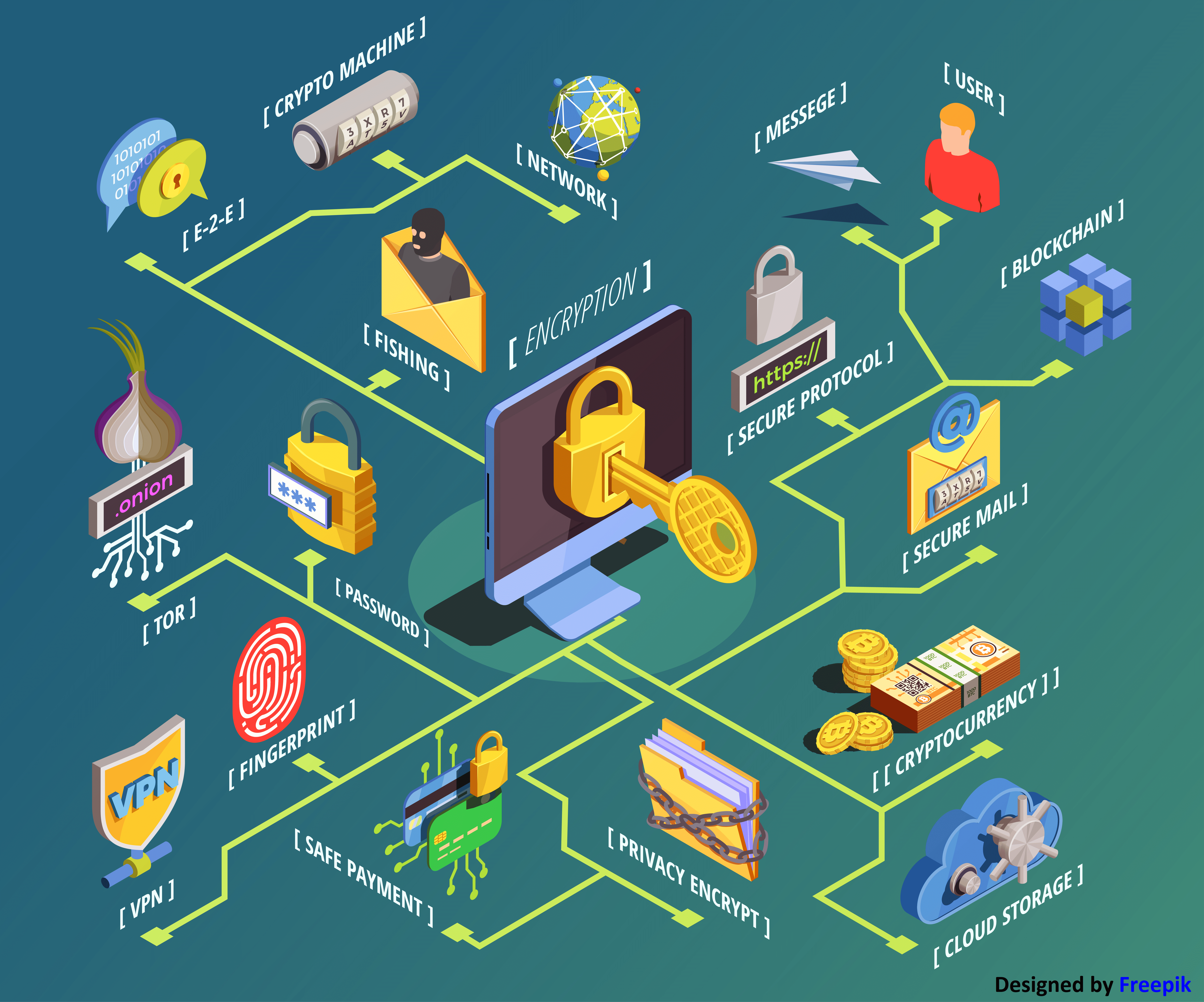
4 Ways to Protect Your Customer’s Data
Considering that hacks are on the rise, and security incidents are not uncommon, it’s important that your company continues to explore methods to shield your customer’s data from malicious actors. Here are four tips when it comes to protecting your customer’s data.
1. Choose the Right Tools
Businesses are collaborating and sharing information with team members, vendors, and various partners on a daily basis. This is a necessity for businesses with remote staff members, which have increased since the onset of the COVID-19 pandemic.
In order to safeguard against this as a security flaw, companies must choose collaboration and communication tools that are secure. When choosing a cloud storage provider or deploying project management tools, companies should be prioritizing security.
Any digital tool that allows employees or clients to access documents or request information from databases should be analyzed for potential risk. A major component here is also the training around these tools. When team members understand the technology you’re using, the company as a whole is better protected.
2. Replacing FTP Scripts
There are many organizations that are still exchanging information using custom programs or scripts. Being that this methodology is now considered outdated, this process presents a security risk.
The architecture of FTP scripts is typically very vulnerable, and offers limited control of data. As a result, they are not accepted by the primary compliance regulations, and their use should be stopped immediately. As a replacement, consider secure FTP solutions that guarantee confidentiality. Using an alternative will improve security while providing total control and traceability of data movements, which ensures compliance with regulations.
3. Locate Compromised Devices
The prowess of modern hackers should not be overlooked, which is why any device with an internet connection should be considered “at risk”. Whether it is a work computer, personal smartphone, or even a connected smart device, hackers are looking to exploit the technology to acquire valuable data from businesses and their customers.
Businesses must remain proactive, and work to locate any compromised devices in your internal network. Additionally, it is important to consider the deployment of solutions that focus on network traffic inspection and threat detection. There are a number of options on the market available, and they provide advice on what is needed in order to avoid the threat of a data breach.
4. Data Encryption
Data that is being stored or shared should always be encrypted, as this ensures its confidentiality. The major benefit being that encrypted data is unreadable should it be accessed by someone without permission. This is why data encryption is so powerful.
File transfer software encrypts data in transit, and rights management solutions help control access to documents and information, despite the location of the data. There are a number of options available when it comes to encryption software. Always make a decision based on your specific needs and the desired outcome.
Disclaimer:
Wherever any material is quoted as sourced from the published text with publishing rights vested in an individual, it is stated that it is a pure quotation and no intention to claim it as our own.
We suggest that businesses look at their vulnerabilities and constantly work to improve their data protection. Avion Technology specializes in assisting throughout this search for improved data security solutions. To learn more about our unique approach to programming, click here
Image Source: www.freepik.com
97 adminJune 28, 2021

6 Project Management Tools for Agencies
Every agency is different and necessitates different solutions. Luckily, there are a myriad of options available, each with its own user interface, user experience, and set of tools. We advise all agencies to consider the following questions before selecting and deploying a project management tool.
- Are you concerned with scalability?
- Do you need a tool with flexibility?
- What features are most important to you?
- How will your clients use the tool?
- What integrations are required?
- Do you have a training process?
- What is your goal for the tool?
Approaching the decision-making process with the right questions in mind will ensure that you choose the tool that is best for you and your team. Being that there are so many options on the market, we want to take a little time to look at the top six tools. If any of these tools seem helpful, we implore you to do some more research and really dig into the features and reviews of each option.
Basecamp
Basecamp has solidified itself as one of the most common choices among agencies that seek a simple management and communication tool. It allows for users to assign tasks to individuals or groups, discuss projects on message boards, generate reports for a team’s capacity, and provide an outward facing screen for clients.
Asana
Asana, like most project management tools, allows for teams to manage projects, store files, and collaborate on the platform. Project planning is fairly simple, allowing for instructions to be added, deadlines to be set, and assignments to be made. Asana’s visual kanban option makes it easy for tasks to be moved from stage to stage, as Asana’s visual elements bring clarity to project tracking.
Features include the assignment of users to tasks, communication organized by task (outside of email), customizable calendars, customizable fields for team members to capture information and track status.
Teamwork
This project management tool was built for both in-house and remote agency teams. It has become known for its ability to simplify collaboration through customizable workflows and easy to use project templates. Many cherish this tool for how intuitive it is for users when it comes to visualizing deliverables and creating lists of tasks.
Features include, customizable templates, task tracking, visualized milestones, real-time status updates, and in-app communication.
Trello
Many people consider Trello a combination of a digital whiteboard and pinboard. Users can create tasks that are pinned to custom “boards”, which can then be worked on individually or as a group. The tasks can be commented on, shared, assigned, and attachments can be added. Boards can then be placed in different areas so that projects are transparent and team members are accountable for their deadlines.
Features include, creation of custom boards and tasks, checklists within tasks, task assignments with attachments and deadlines, commenting on tasks, and the creation of public or private links for shareability.
ProofHub
When an organization like NASA is using your project management tool...it must be effective. Proofhub combines many features and aims to eliminate the need for too many tools within your business. It allows for project planning, collaboration, organization, and makes it easier to deliver projects on time.
Features include, online proofing to cut back on feedback time, de-stressing the task management process, Gantt chart visualizations, and an effective mobile app for both Android and iOS users.
Scoro
Scoro has built a name for itself around how comprehensive of a tool it is. It is being deployed by both professional and creative services companies in order to bring structure to workflows. This goes beyond project management and into a business management solution, which includes tools for automated quoting and billing.
Features include, one platform for team members and clients, seamless workflows that organize all silos within a business, real-time overviews and reports, and integrations with platforms such as Outlook, Mailchimp, Dropbox, and more.
In Conclusion
As a programming partner, we understand the monumental importance of strong project management. The tools that you choose will help provide a structure that can elevate your operations. Start by asking yourself the right questions in order to properly gauge your organization’s needs. The answers to these questions will set you on the path to uncover the project management tool that is best for your agency.
Disclaimer:
Wherever any material is quoted as sourced from the published text with publishing rights vested in an individual, it is stated that it is a pure quotation and no intention to claim it as our own.
We’ve successfully completed over 700 projects for our clients over the last 12 years. A number of these clients have gone on to become successful VC funded ventures. If you’d like to learn more about our unique approach to programming, click here.
Image Source: www.freepik.com
104 adminJune 22, 2021 Youtube Video

Top 5 Programming Trends in 2021 So Far
Now that we’re a quarter of the way through 2021, a clear set of trends has emerged within programming. The rest of the year has a lot in store from a technology perspective and web development is a huge part of that. When it comes to building your new web project this year, you should pay close attention to the following five trends.
- The Rise of Apache Spark
- Native App Development
- The Triad of Kotlin, Scala, and Java
- Keep an Eye on Distributed SQL
- The Omnipresence of Cloud Technology
The computation of large-scale datasets was once ruled by Hadoop Map-Reduce. However, a new frontrunner has arisen over the last few years, and it goes by the name of Apache Spark. Many programmers and agencies felt restricted by the limitations of Hadoop Map-Reduce, as it processes data in the memory as opposed to storing it post-operation.
Apache Spark presents an opportunity for cost savings and improved performance when compared to the other options on the market. It processes everything in memory and we predict that it will become the most common batch processing framework by the end of the year.
Programs that are developed to run on specific machines are known as native apps, and these are becoming much more sought after. The primary use for these builds is to run on smartphones. Being that Android and iOS are the two main operating systems, native apps are mostly built exclusively for these two platforms.
Businesses are increasing their investments in native apps because of the significant improvements they offer to performance and user experience. While cross-platform tools like React Native and Flutter exist and offer a more rapid development timeline, app development companies will still drive major revenue through native app development in 2021 and beyond.
The rise and domination of Java since its inception in 1991 is nothing to scoff at. Java programming is positioned to continue its influence within the industry, as Java runtime and Java Virtual Machine offer a powerful infrastructure for common programming languages such as Java, Kotlin, and Scala.
The nature of software licenses is always changing, and recently Oracle altered the license for JVM. This means that every company that uses Java, Kotlin, and Scala is now required to pay significant subscription fees. Despite this change, these three languages will continue to dominate in 2021.
Databases have become a critical element within the software industry, to the degree that the world needs them to run. SQL has cemented itself at the top of the popular databases list because it provides durable ACID transactional guarantees. These are necessary when it comes to running business applications.
Despite the expectation of continued prominence within the space, many companies are actively seeking a solution that allows for the retention of the ACID guarantee while parting ways with SQL databases. The two solutions that are successfully fulfilling this need are Amazon’s Aurora and Google’s Spanner. The issue is that both of these offerings lack SQL features that are still desired. Whoever steps in and fills this role will likely dominate this space beyond 2021.
The proliferation of cloud technology has made it accessible for businesses of all sizes. The degree to which the cloud is being used varies, however, studies reveal that cloud adoption has accelerated across most industries. At this point in 2021, if you aren’t on the cloud, perhaps now is the time to consider it.
Popular cloud vendors such as Amazon, Google, and Microsoft have been doing everything in their power to encourage businesses to migrate to the cloud. Now is the time to take advantage of this technology, and even claim one of Google’s $300 credits for the year.
These five trends will undoubtedly carry us through 2021 and beyond. Trends change yearly, and as technology advances new doors of opportunity open for programmers and agencies that remain at the forefront of the space. We encourage everyone to do their research and remain cognizant of developments as they occur, as this list is by no means comprehensive.
Disclaimer:
Wherever any material is quoted as sourced from the published text with publishing rights vested in an individual, it is stated that it is a pure quotation and no intention to claim it as our own.
Avion Technology is always looking toward the future of programming, and we help businesses with the adoption of new technologies. To learn more about our unique approach to programming, click here
Image Source: www.freepik.com
72 adminApril 27, 2021

The Simplest Way to File a Patent
If you’re an inventor who is serious about delivering your invention to the world, and you want to secure your ability to get rich… you’re going to want to patent that invention.
If you’re not familiar with exactly what a patent is, we recommend that you do some research. But, in essence, a patent is a form of monopoly that is granted by the government for a specific amount of time. This period of time affords the inventor the ability to manufacture, market, and sell their invention. It protects your concept so that no one else can steal it from you for the allotted period of time.
The following eight steps outline the simplest path to patenting an invention…
- Conduct a Search Conduct a search of the United States Patent and Trademark Office (USPTO) for similar ideas. If your idea has already been patented, then it will be a huge waste of your time to try and patent it again. This is fairly common, so do your due diligence and utilize this helpful search engine created by the USPTO. Make sure that your idea is actually something that you can legitimately patent. Find an Attorney A patent attorney will significantly simplify the patent application process. These attorneys bring years of experience to the table, which means they’ve likely seen countless successful and unsuccessful filings. These professionals will help you avoid mistakes and save money in the process.
- Finalize Patent Type There are various types of patents that can be applied for. Do you require a Plant, Design, or Utility patent? For the uninitiated, the USPTO offers this helpful guide. Obviously, the type of patent that you are applying for will alter the process.
- File Your Provisional Application It is important to take a preemptive approach to your filing, as someone might be trying to beat you to the punch. The filing of a provisional patent application protects you from someone jumping in and claiming that they had the idea first. The patent law system prioritizes those who file first and those who invent first. Move quickly and decisively.
- Register as an eFiler The quickest and easiest way to file a patent is online. While it is possible to file a patent application by mail or even fax, the USPTO website simplifies the process. Start by registering as an eFiler and utilizing their resources to inform yourself on the in and outs of the application process.
- Assemble Application Requirements When submitting an application, a specification is required. Preparing this includes an abstract, background, summary, description, a conclusion, ramifications, and a scope. This process also requires that filers define the legal scope of the patent being filed. Being that this is a complex request, it is helpful to employ the expertise of a patent attorney.
- Finalize Your Application The patent application process takes two to three years on average, which makes it so important to be confident in your application. Review all of the gritty details of your application so that you can avoid rejection. Simple mistakes or errors can be resolved during a thorough review process.
- Patent Your Idea Every patent that is filed is assigned a patent examiner. All communication flows through this person, including any formal requests or correspondence. It is important to keep communication channels open with this individual and to respond in a timely manner. If you are quick to respond and receptive to their requests, the process will move faster. Patent attorneys are helpful here as well, as they communicate directly with your patent examiner and the USPTO.
Disclaimer:
Wherever any material is quoted as sourced from the published text with publishing rights vested in an individual, it is stated that it is a pure quotation and no intention to claim it as our own.
Avion Technology has worked with many businesses and entrepreneurs that have been through the patent application process and successfully registered a patent. We help digital agencies with white label programming and a hybrid approach that utilizes both Chicago-based and offshore talent.Learn more
Image Source: www.freepik.com
77 adminApril 20, 2021

Investment Rounds Explained: Seed, Series A, B, & C
Most successful startups actively seek external funding at various stages of their development and growth. Outside investment processes are commonly broken down into specific rounds of funding. These rounds include Seed, Series A, Series B, and Series C. Each round allows for investors to obtain equity or partial ownership of the company in exchange for capital.
A fundamental understanding of each investment round is critical for both company owners and those interested in evaluating entrepreneurial prospects. Each round of funding aims to bring ideas to life, empower entrepreneurs to drive growth, and ultimately sustain a successful business that generates substantial long term revenue.
Let’s take a look at each unique investment round...
SeedThe first official investment round that a business partakes in is called ‘Seed funding”. This initial financial support is meant to assist in the early growth of a business venture. The goal is to fuel revenue generation and strategic initiatives during the infant stages of operations. Often, this funding is allocated by the new business for product development or initial expenses like staffing and market research.
The types of investors that assist with Seed funding vary. Sometimes these investors are the founders themselves or their friends and family. Beyond personal relationships, VC firms, incubators, and Angel investors are common contributors in the Seed round of funding. Angel investors are arguably the most common early investors, and they require equity in the company in exchange for their investment. Being that many of these initial investments contain some degree of risk, equity requests have become common.
The specific amount raised during the Seed round can vary from $7,000 to $2.5 million, as it depends on the startup being considered. While many startups eventually move on to other rounds of funding, some decide that Seed investment is all that they need and never engage in further rounds. On average, companies in the Seed round are valued between $3 - $6 million.
Series ASeries A funding is often sought by businesses that have already proven their ability and demonstrated that they are successful to some degree. This demonstration of success can be in the existence of a strong user base, or consistent revenue over an extended amount of time. The objective of Series A funding is to truly scale products, users, and operations.
One of the primary differences between Seed round and Series A is the existence of a solid business model that will lead to sustainable success and an ability to monetize. While many startups successfully raise Seed money, they struggle to monetize. This round of investment has a significant range, as it is not uncommon for Series A rounds to obtain anywhere from $3 - $20 million. If the business in question is within the tech industry or is considered a ‘unicorn’, then Series A funding can average $15 million.
Investors are looking for much more from businesses at this stage than in the Seed round. While the Seed round is focused on powerful ideas, Series A companies must possess a strategy that positions a strong idea for success. These investors are often working at VC firms, and the process is much more nuanced. VC firms are looking for companies that have already received a single investor at this stage, known as an “anchor”. This first investor helps attract the attention of other competitive investors.
An emerging trend within Series A funding rounds is the presence of equity crowdfunding. This provides an alternative for businesses that are unable to create buzz or interest within the VC space. This is a common issue, as less than 50% of businesses that received Seed funding go on to secure Series A funding. Businesses in the midst of Series A funding can be valued at around $25 million.
Series BWhen a business moves into the Series B round of funding, they are well past the development stage. At this point in operations, investment is meant to expand the market potential and reach of a business, as the user base is already established. In order to obtain Series B funding, a company must demonstrate to investors that it is ready to scale sustainably and successfully.
In order to achieve this scale, businesses often bring in additional talent with a track record for business development. Often these professionals are in sales, tech, or advertising. The cost of acquiring this level of talent is a hefty one, which is why the average Series B raise is $33 million. At this point, the company is established and its valuation is reflective of its success to date (between $30-$60 million).
The investors in this round possess the same professional profile as those in Series A. Often an anchor investor at a VC firm gets the ball rolling and inspires others to invest. The primary difference here is the presence of a few select VC firms that specialize in funding later-stage companies.
Series CEvery business that goes through Series C funding is already a success. Because of this, the funds raised in this round usually go towards product development or the acquisition of new companies. Series C investors are looking to more than double the amount that they inject. The idea is to scale as quickly and smoothly as possible, as the business is already successful to some degree.
Being that rapid scale is often the goal here, acquisition of another company is a common use of funds. Since the primary company is successful, it becomes much more conceivable that the same team would be able to acquire a similar or related company and integrate it. This is especially effective if the company being acquired is a competitor with a slightly different offering or market. This allows the Series C company to immediately expand.
Another common approach is to broaden the target market. If a company is a huge success in America, Series C can help expand operations overseas where a similar approach can be used to scale quickly.
Due to the demonstrated success of companies that make it to Series C, the investment is viewed as much less risky. A less risky investment increases the presence of potential investors. This is why investment banks, hedge funds, and private equity firms all appear during this round. These investors are looking to secure their own positioning as leaders, which is why they are inclined to invest in a company that is already doing very well.
Series C businesses often secure hundreds of millions of dollars in funding, as they are often valued at around $120 million. This valuation is common of companies that are looking towards an IPO, and Series C only increases this valuation. The primary difference in valuation at this stage is the fact that it is based on real data and not expectations for success.
Disclaimer:
Wherever any material is quoted as sourced from the published text with publishing rights vested in an individual, it is stated that it is a pure quotation and no intention to claim it as our own.
Image Source: www.freepik.com
572 adminApril 14, 2021

The Biggest 3 Issues Facing Most Agencies
Running a design or development agency requires an ability to tackle a range of operational issues. Many of these issues stem from client demands, which can range from complex needs to vague ideas that must be deciphered. All client demands vary in certain respects, but each must be considered and navigated in order to achieve success. While your agency brings a lot of experience to the table, development is always challenging and some issues are consistent across the industry.
Avion Technology specializes in the white-labeling of programming for digital agencies, providing a hybrid approach to offshoring that keeps project management in Chicago while delegating certain elements to trusted offshore partners. This approach simplifies web development for all of our partners by solving these 3 common issues facing most agencies today.
- Staffing In-House Programmers
One of the logical solutions to clients regularly requesting complex website development is the hiring of an in-house programmer. At first, this decision makes sense as you consistently need a programmer and you want one that you trust as a dedicated team member.
The clear benefit being that you will now have a developer that is fully onboarded as a team member, and working closely with every other relevant employee on staff. The issue that agencies face when making this hire is that one person cannot cover the range of specialties and skills required to program. The evolution of technology results in new techniques, platforms, and preferences that must be accounted for.
An in-house developer usually does not have the bandwidth to keep up with developing trends, as their focus will need to be on client projects and deliverables. It becomes impractical for agencies to keep up with new software, equipment, and skills that in-house developers must remain cognizant of as the industry evolves. This is why staffing programmers remains a top challenge for most agencies.
- Outsourcing Decisions
As a response to staffing challenges, many agencies decide to outsource some elements of development. This is a very effective solution, however, too many agencies struggle with the decision of who and where to outsource to. The choice commonly exists between freelancers, partner agencies, and overseas companies. Each choice has its pros and cons, but hybrid solutions exist that offer the best of all options.
Coordinating freelancers can be a nightmare. These external professionals must be properly managed so that deadlines are adhered to, ideas are protected, and communication is consistent. There are so many variables here, and changes in availability, so some agencies try to avoid this path. Even more of a concern is when a number of different freelancers get involved and a project becomes unwieldy with inconsistencies and varying code. Outsourcing overseas is an option that many agencies take when looking to scale quickly, as costs can be cut. There are concerns related to language, culture, and work schedule, which some agencies struggle to manage. The complexity of any given project can impact its success and the hurdles that exist.
Agencies like Avion Technology bridge the gap between outsourcing overseas and working with a partner firm or freelancer. We have our own team here in Chicago that handles project management and collaboration with our overseas team and our clients. This eliminates concerns related to overseas outsourcing by providing a local team that manages projects and is available for communication with clients.
- Scaling Your Agency
Scaling any business is difficult, and creative agencies are notoriously challenging to scale. When growth occurs, new people must be hired, services must remain consistent, and business development becomes more complex and financially significant. The ability to scale requires an ability to manage growth so that all processes can be monitored and optimized while maintaining the company culture that helped you achieve success in the first place.
In some cases, an agency was constructed around the founder’s expertise and brand. This sets the groundwork for client expectations, which can be difficult to move beyond. As agencies scale, growth must occur at a deeper level so that the founder isn’t expected to handle every major client interaction. Once scale is achieved, the founder will not be able to have his or her hands in every pot, which makes them a bottleneck should that expectation continue to exist.
Avion Technology is a great resource for agencies that are looking to scale sustainably. We help manage projects, providing a range of pure backend developers that help remove bottlenecks for our clients. We work with our team in Chicago and our team overseas to ensure that clients receive the value associated with outsourcing and the trust associated with a local partner in your city.
Disclaimer:
Wherever any material is quoted as sourced from the published text with publishing rights vested in an individual, it is stated that it is a pure quotation and no intention to claim it as our own.
Whether it scaling, staffing, or outsourcing considerations, the decisions you make have a substantial impact. Avion Technology specializes in assisting throughout these processes. To learn more about our unique approach to programming, click here
Image Source: www.freepik.com
73 adminApril 13, 2021

THE FINE ART OF FINISHING A PROJECT
Finishing a project means a specific date decided by the client and the executors when operations of the project are initiated or are capable of being started.
The initial step is finishing the task no matter what, complete a lingering task or project at any cost. Make a plan since you want to get the job completed. Start the project on time and make deadlines to complete the project in parts. You will have to not only finish the project but complete it fully with precision.
Here are some ways to cut through the barriers and get to the finish line with content:
To deliver the project successfully, take the project, and divide it into smaller parts. Stay focussed and concentrate on a very set goal; do not get distracted. Evaluate and keep a constant check on the thoughts often. Check if your daily goals are on track with the long-term goals. Break it down into manageable and achievable segments. Micro goals are all about what you can manage in a micro amount of time.
2. Eliminate distractions:
To eliminate distractions put yourself in a distraction-free mode, this means isolating yourself from trivial things. Set a time at 90 minutes without any break in between. Begin building habits that help you stay focused. Work to create patterns that signal to you and those around you that you're in distraction-free mode. Keep your phone away from you to avoid distractions.
3. Call in the folks:
Sometimes it is impossible to do the whole task all by yourself. Ask for some help whenever you are unable to do a difficult task. It might get someone on board who has been out of action for weeks; in such cases, they may have ideas to complete the project better and faster.
4. Keep moving past the mistakes:
Slow down every time you hit a small roadblock, and this can add a lot of extra time to the project work. Continue moving through initially; you can best mark problems as you proceed. Revisit the issues and clean up small errors at the end, that will help you keep the rhythm going. If a crucial problem hits, solve it now, so it doesn't send you way off course.
5. Get rid of your judgment:
Second-guessing and having multiple solutions to a problem at every step can cause delays. Self-judgment could be crippling when trying to solve a problem. Try to brainstorming to get tons of answers to come out of stuck gears. Express all your judgment-free ideas and solutions. Go back to decide what sections and solutions would help the project.
6. Pause and Review:
If you keep on pushing forward, you might be getting lost. Take a break after some time, then go back and review the work done from the start. Revisiting the project work from the beginning will remind you of the intentions during the launch.
7. Keep your eye on the Benefits:
When your brain has already switched off and is looking forward to the weekend, it's hard to concentrate. In such cases, look at lots of procrastinating techniques to get to the finish line. That's when you must take a few minutes to visualize a finished project. Then push hard to power through and get it done.
91 adminApril 29, 2020 Youtube Video
Get a Quote
Starting a project is just a few steps away...

